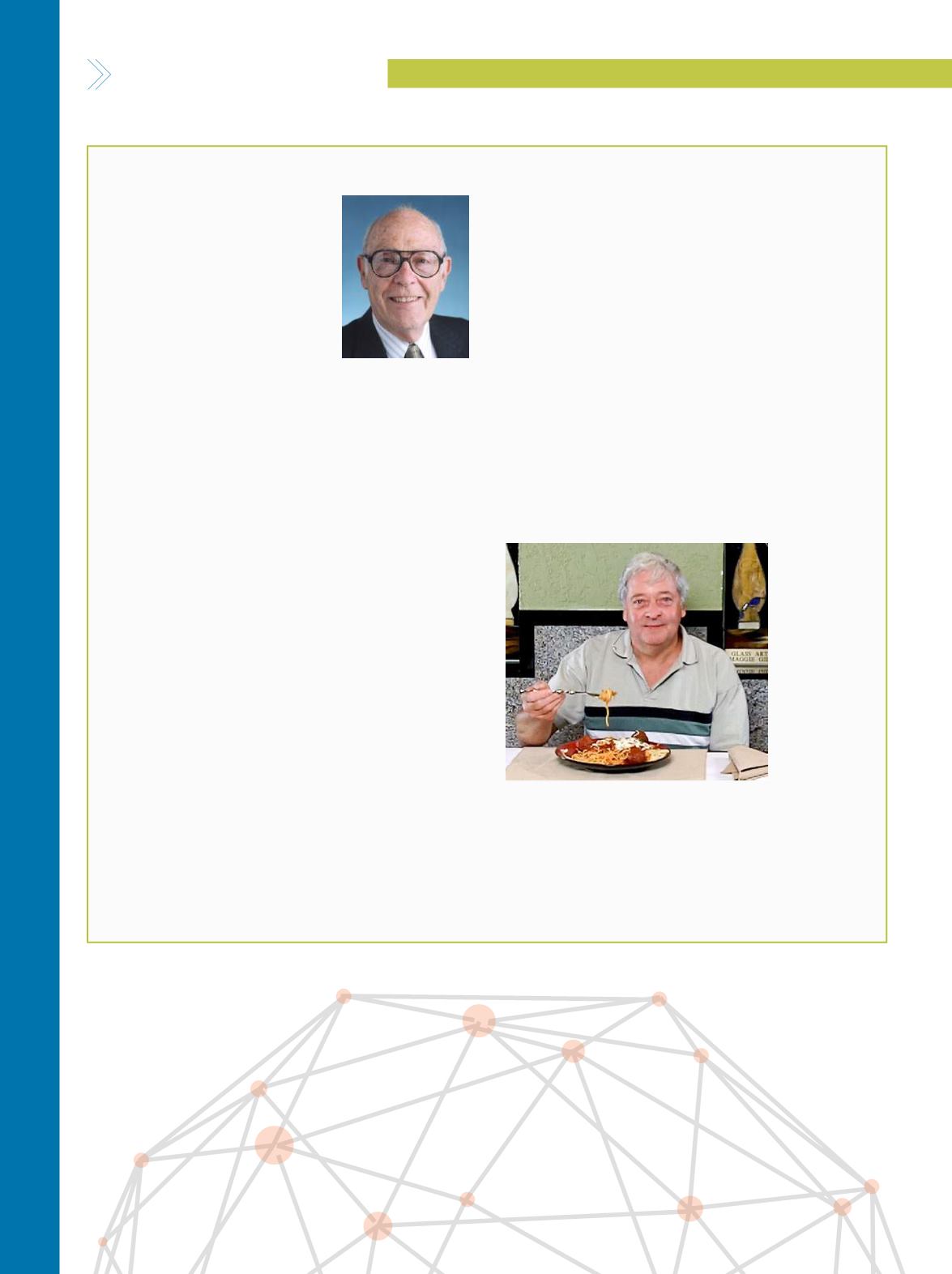

HIGHL IGHTS
A D V A N C E D M A T E R I A L S & P R O C E S S E S | A P R I L 2 0 1 6
5 8
IN MEMORIAM
IN MEMORIAM
JohnW. Cahn, FASM,
passed away
on March 14 at age 88. He was born
in a Jewish family as Hans Werner
Cahn in Cologne, Germany, in 1928.
In 1933, his immediate family fled
to the Black Forest, later moving
throughout Europe and eventually
living in Amsterdam. In 1939, the
family came to the United States.
Most of his relatives who stayed
in Germany and Holland died in
the Holocaust. The Cahn family settled in New York City
and John became a U.S. citizen in 1945, serving in the
Army in Japan after World War II. He earned a bachelor’s
degree in chemistry from the University of Michigan and
a Ph.D. in physical chemistry from the University of Cali-
fornia, Berkeley, in the early 1950s.
Cahn worked for General Electric in Schenectady,
N.Y., and taught at the Massachusetts Institute of Tech-
nology before joining the National Institute of Standards
and Technology (NIST) in 1977, where he worked for
decades. In 1998, he received a National Medal of Sci-
ence from President Bill Clinton and also the Kyoto Prize
for advanced technology in 2011, among other awards
and honors. Cahn is perhaps most widely known for the
Cahn-Hilliard equation, which he developed with British
metallurgist John E. Hilliard. The equation describes
how dissimilar materials move away from each other
during phase separation. Beyond metallurgy, the equa-
tion has also been applied in areas frompopulation stud-
ies to the formation of galaxies. During the 1980s, Cahn
assisted his colleague Dan Shechtman with discovery of
quasicrystals, which feature non-repeating patterns, a
form thought to be impossible in nature. Cahn moved to
Seattle in 2007 and served as an affiliate professor at the
University of Washington.
Bob Balow
passed away unexpectedly on February 24 at
age 69. He earned his degree in metallurgical engineering
from the University of Wisconsin and later started Accu-
Temp Heat Treating in the Racine area. Accu-Temp also
housed three other of Balow’s companies—Ferroxy-Aled,
RCP Products, and Neat Ideas.
He developed at least five patents, including his
famous Pasta Fork. Holding the twisted fork and pressing
down makes the fork spin, wrapping noodles around it.
A 2011 YouTube video in which Balow demonstrates the
fork has achieved more than 1 million views. Balow also
developed a coating process for cast iron cookware that
prevents rust and is very tough. The process requires a
specialized $1 million furnace, so he built one at Accu-
Temp. Balow also worked as an international metal-
lurgical consultant for companies such as SC Johnson,
General Motors, and MillerCoors.
John Cahn. Courtesy
of NIST.
Bob Balow and his famous Pasta Fork.
Courtesy of RCP Products.


















